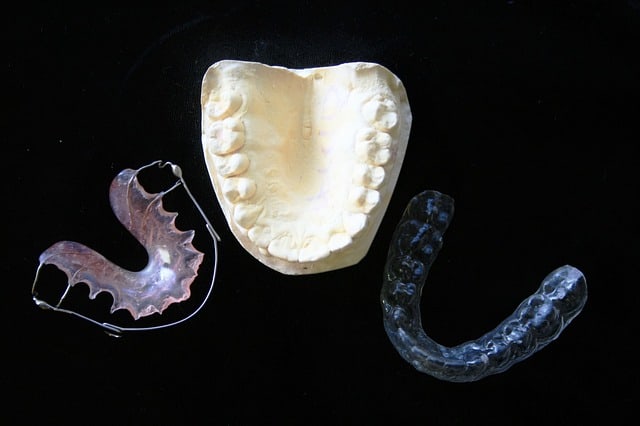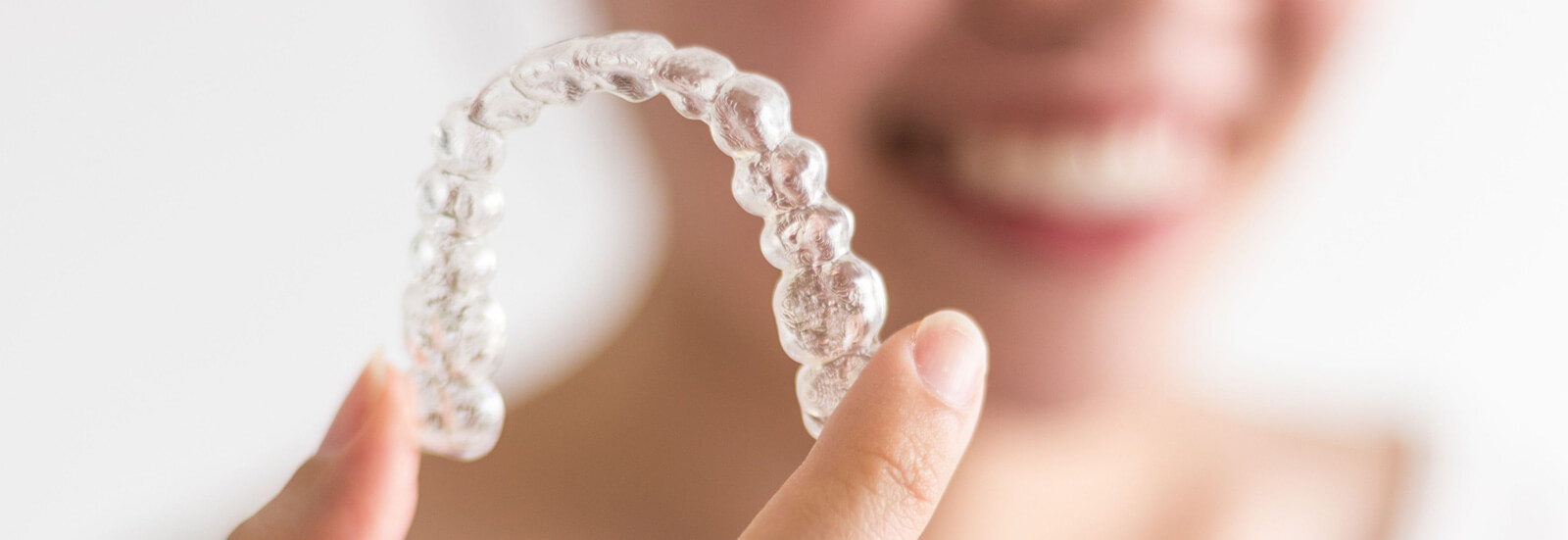LAST UPDATED: FEBRUARY 28, 2017
Ever wondered why it seems like everyone and their best friend had or has had orthodontic work? Well, nowadays orthodontic improvements have made the possibility of orthodontic treatment possible for a much greater number of people than once received it. As little as three decades ago, orthodontic treatment was much more involved. Nowadays, we would consider the old versions of many orthodontic types of equipment to be antiquated. Along with the improvements has come the option for more people to receive treatment. Because orthodontic care was once so involved, only people with the most severe problems were candidates.
Nowadays, many people can be helped to have a straighter, better-aligned smile due to orthodontic treatment. Generally, people hear the words orthodontic treatment and assume braces. While they are used in a lot of orthodontic treatment methods, other equipment may also be used instead of or in addition. Another common piece of orthodontic equipment is the retainer. Learning what a retainer does, how to use it, and most especially, how to care for it is very important to the overall success of any person’s orthodontic treatment.
FAQ
What Types of Retainers are There?
There are different types of retainers and a person’s wearing and care instructions may vary depending upon the type of retainer they have. Some of the common types of retainers include the Hawley retainer, bonded retainers, and Essix/Zendura retainers. Bear in mind that no matter what type of retainer a person has, it will be made to fit their mouth perfectly using mouth molds.
The type of retainer most people picture is the Hawley retainer. The Hawley retainer is generally used on the upper teeth but may be used on the lower teeth as well. The upper portion of a Hawley retainer is made of an acrylic arch that sits against the roof of the mouth surrounded by two loops of wire that fit around the teeth from front to back. A lower Hawley also contains an acrylic plate and wire, but only wraps around the bottom front teeth instead of reaching to the back.
Bonded Type
Bonded retainers, meanwhile, are semi-permanent or permanent dental appliances. This small band of metal is bonded to the back side of teeth (and is invisible from the front) in a manner similar to other bonded dental work. It is only applied to the front teeth and does not reach the back. Only the orthodontist can remove a bonded retainer. It is generally used when significant work has been done and the teeth shifting back to the old position is likely.
The last type of retainer is known by the brand names Essix, Zendura, and Invisalign. This retainer is vacuum formed to fit the patient’s mouth. It is a clear tray made of PVC material that clips or slips on from canine to canine. Like a Hawley retainer, it is generally worn all day and night except to eat. The Invisalign form of this retainer generally contains a series of trays with slightly different positioning in steps to slowly move teeth like braces and then a single Essix retainer to wear after Invisalign treatment is complete.
How to Care for the Different Types of Retainers
Taking good care of a retainer means it is important to identify which type or types of retainer you have, which is where the above information will prove helpful. Bonded retainers are the most simple retainers for patients to care for because they are not removable. Generally, just flossing between the wire and the teeth and remembering to brush one’s teeth is all that is required to care for a bonded retainer. Some people may find it easier to floss between the wire and the teeth using a floss threader. Flossing between a fixed retainer and teeth is very important to prevent the build up of tartar and to ward off gum disease. Beyond flossing, the only care required for a bonded retainer is going to check-ups when required to see that the retainer is still firmly bonded and in good condition.
Essix Retainer
Caring for an Essix retainer is also relatively straight forward. Because an Essix retainer is made of a relatively thin material, it is very important to take it out before eating to keep from chewing through it. Likewise, removing and cleaning the Essix retainer is vital when you drink anything but water, meaning it is a good idea to take it out when drinking as well. In addition to helping the retainer last longer, not wearing it while eating or drinking is better for teeth. Essix retainers need cleaning as well. Washing them in cool or warm water and brushing them with a toothbrush and toothpaste is a good way to keep them clean and fresh tasting.
Remember, any time you are not wearing your Essix retainer, keep it in its case to prevent breakage or losing the retainer. Essix retainers usually don’t hold up for extremely long periods of wear, especially for those who grind their teeth when sleeping. Often, they are provided for short-term retainer use or are the first stage of treatment before a Hawley retainer before or after braces are used. Because Essix retainers usually aren’t meant to be used long term and are very thin, keeping an eye on the condition of the retainer is important in case you need a replacement.
Hawley Retainers
Hawley retainers are one of the most common kinds of retainers. They are meant to be worn for a long time; many patients wear a Hawley retainer for two or more years, in fact. Because of the long-term usage nature of Hawley retainers, they are usually made of more durable product than Essix retainers. That said, caring for and cleaning them is just as important. In fact, because Hawley retainers are not easily replaceable like Essix retainers, and are very expensive, they should be cared for extremely carefully.
An important step in caring for a Hawley retainer is having your orthodontist show you how to correctly put in and remove the retainer. Doing this correctly will keep both the retainer and the patient’s teeth much more comfortable. Like with Essix retainers, patients will be given a retainer case. Orthodontists cannot stress enough how important it is to put your retainer in the case even if it is out for a minute.
Be Cautious
It is also important never to eat or drink wearing a Hawley retainer. Letting the retainer come into regular contact with food or drink substances isn’t good for it or your teeth. It is also important to clean your Hawley retainer every time a patient brushes his or her teeth.
Like with Essix retainers, patients will be given a retainer case. Orthodontists cannot stress enough how important it is to put your retainer in the case even if it is out for a minute. Retainers are fragile, dropping, stepping on, or wrapping them in things can lead to them getting crushed or thrown away by accident. However, the case will protect the retainer and is much less likely to be thrown away by accident. It is also important never to eat or drink wearing a Hawley retainer. Letting the retainer come into regular contact with food or drink substances isn’t good for it or your teeth.
Sanitary Oversight
It is also important to clean your Hawley retainer every time a patient brushes his or her teeth. A soft toothbrush, some cool water, and toothpaste can be used to gently brush the retainer clean. Gentle brushing is vital to avoid scratching the acrylic or bending the wire, however. One tip is to use a baby toothbrush for a retainer because the bristles are softer and smaller. There are also products patients can find through a drug store or their orthodontist to soak retainers in once in a while. This soaking solution is like a deep cleaning for your retainer and keeps it germ-free and tasteless.
If a patient gets sick, he or she should never boil or heat the retainer in an attempt to sanitize it. Use antibacterial mouthwash or the soaking solution mentioned above to clean and sanitize a retainer. Heat will distort or melt the retainer. Likewise, remember to wear the retainer as instructed. Teeth can and will shift if the retainer is not worn as prescribed. This makes it hard or painful to put on. Sometimes, wearing a retainer can make the mouth feel sore or pressured, this is normal and taking OTC pain reliever like Tylenol is perfectly fine. Generally, this pressure is most common soon after getting your retainer and after having it adjusted and subsides quickly. Pain beyond this may be a sign your retainer needs further care. You should make an appointment to have it checked.
Why Should I Take Care of My Retainer?
Taking care of a retainer well will ensure it has a long, serviceable life. Properly cared for, retainers rarely need to be replaced and may serve a patient for the entire time a retainer is needed. Likewise, caring properly for a retainer is also a part of orthodontic overall health and wellness. This will help the mouth and teeth stay healthy too and prevent loss of progress in already completed treatment.
Contact Us Today for an Appointment
Not every orthodontic office has two experts to examine and treat patients but Nease and Higginbotham Orthodontics does. We make it convenient to drive to our facilities by having three locations in South Carolina:
- Spartanburg Orthodontics
- Gaffney Orthodontics
- Duncan Orthodontics
At our state-of-the-art orthodontic facility, patients have the opportunity to meet with two qualified orthodontists who understand how to determine the most appropriate braces for patients. Anyone with unsightly misaligned teeth can schedule an appointment with a telephone call or online form to talk to:
You can also drop into one our offices in Spartanburg, Duncan of Gaffney.
Dr Nease Orthodontics
2455 E. Main Street
Spartanburg, SC
29307
(864) 579-7700
How Can I Properly Care for My Retainer?
[super-post id=”sp563df20140b54″ title=”Related Posts” items=”5″ show_title=”true” title_length=”0″ title_ellipsis=”…” show_thumbnail=”true” remove_no_thumbnail=”false” icon_height=”40″ icon_width=”40″ icon_empty=”1121″ show_comments=”true” comment_icon=”https://nthdegreeorthodontics.com/wp-content/plugins/super-post/images/comments.png” show_date=”true” show_date_link=”true” date_icon=”https://nthdegreeorthodontics.com/wp-content/plugins/super-post/images/date.png” date_format=”F j, Y” show_author=”false” author_title=”View all posts by {author}” author_icon=”https://nthdegreeorthodontics.com/wp-content/plugins/super-post/images/author.png” show_category=”false” first_category=”true” category_separator=”, ” category_icon=”https://nthdegreeorthodontics.com/wp-content/plugins/super-post/images/category.png” offset=”0″ page_range=”5″ load_text=”Load more posts” query=”related” order=”DESC” post_status=”publish” title_trim=”words” load_style=”none” template=”left”]



